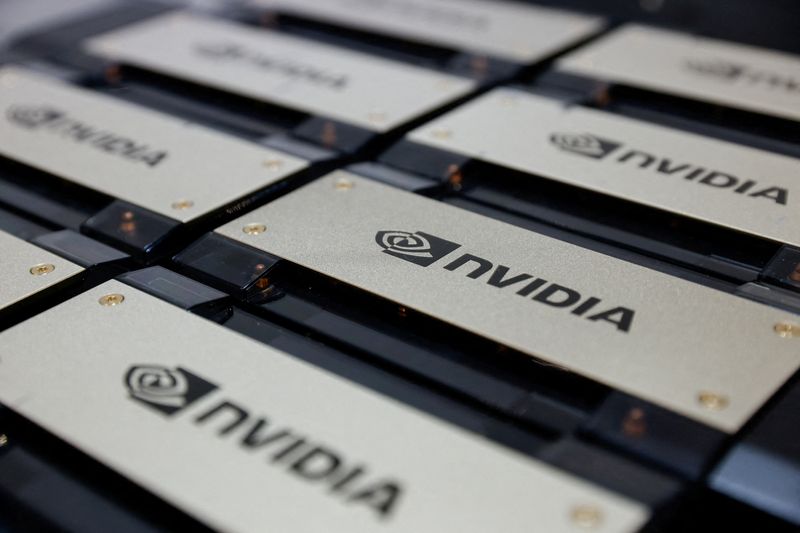Street Calls of the Week
Last week, the major U.S. stock indices concluded on a downward note, with the Nasdaq Composite experiencing its sixth consecutive session of losses on Friday, the longest streak in over a year. The technology-centric Nasdaq dropped 2.05% to close at 15,282.01, while the broader S&P 500 also saw a decrease, falling 0.88% to finish at 4,967.23.
The drop was influenced in part by a retreat in semiconductor companies globally, including Nvidia (NASDAQ:NVDA) stock, pulling back from recent highs as investors took profits following a relentless rally.
Nvidia, chipmakers plunge amid macro fears
Amidst the latest sell-off, Nvidia stock plunged 10% on Friday, retreating to its lowest levels since late February.
In the U.S., the Philadelphia Semiconductor Index (SOX) reached a roughly two-month low on Thursday and continued to decline into Friday. This sentiment was mirrored in Asian markets where chip-related stocks fell significantly in Tokyo and Seoul.
The overall market mood was dampened by the decline in TSMC’s share price, despite the company exceeding market expectations with its January-March results, which were announced on Thursday.
Additionally, market sentiment was also affected by geopolitical unrest in the Middle East, as well as a worse-than-expected earnings report by ASML Holding (NASDAQ:ASML)(AS:ASML) Holdings, a major semiconductor player.
“Why are semis selling off? It was all likely in the preview, we believe some semi stocks will likely struggle given mixed results and a pause in the increased AI forecasts which drove the group from January to last month,” Citi analysts said in a recent note.
“We continue to believe some semis will face a headwind until June/July when it could become apparent estimates are about to go up again and we believe this is a buying opportunity for our buy-rated names,” they added.
Key levels to watch in Nvidia stock
Nvidia is expected to unveil its latest earnings report next month, with investors keenly awaiting updates on current demand trends for AI chips following several blockbuster prints.
According to current consensus estimates, the chipmaker is expected to report earnings per share (EPS) of $5.19 on revenue of $22.91 billion, compared to $1.09 and $7.19 billion in the year-ago period.
Meanwhile, as a result of the recent pullback, the 50-day moving average (MA) of Nvidia stock has been penetrated, “putting next support at February’s gap and a Fibonacci retracement level in the $742-$752 area,” Fairlead analysts highlighted.
“If this support zone is taken out, February’s gap would likely be filled and a secondary Fibonacci level near $615 would be targeted over the next 2-3 months,” they added.
“Short-term oversold conditions are in place, but there is a good deal of room to intermediate-term oversold territory (and no DeMARK signals), which tells us to consider reducing NVDA exposure into a rebound, with a lower high now more likely versus $974 resistance.”
